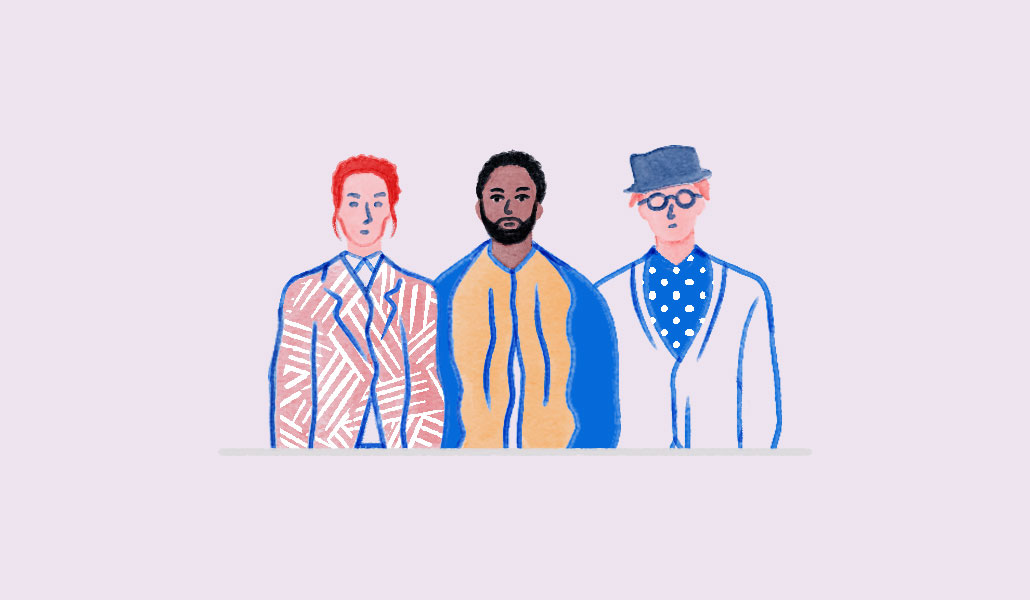Bye-bye blazers and pencil skirts: What workwear sales reveal about the RTO push

The office is dead. Long live the office.
Last week, New York City real estate blog Curbed ran the headline, “The Office is Half-Dead,” summing up all the confusing, conflicting news about whether the RTO push is ramping up or stalling out.
How can we get a sharper sense of macro-trends in worker behavior?
Well, we figured that if masses of professionals are planning to go back to the office regularly, they’ll have to dress the part. (Especially after nearly three years in wearable blankets.) So we spoke to apparel industry insiders and scoured retail data — specifically examining searches and sales for professional attire — as a way to read the tea leaves.
Conclusion: The majority of worker-consumers are returning to office life, and they are shopping for it.
And yet, the ground is shifting beneath their high-end sneakers. Workwear sales are a mirror of worker behavior, not a crystal ball. What the future holds — for our work and our wardrobes — is less clear. And what we’re shopping for, just like the way we work, is changing dramatically.
The Covid closet: What the pandemic did to our clothes
The lockdowns of 2020 froze our old work wardrobes in amber. Don’t worry about those extra pandemic pounds you may have put on; you’ll probably never again wear the outfits from your commuting days in 2019 (one notable exception is the button-down shirt, which is more popular than ever).
As working from home wore on through 2021, sales of athleisure soared. A total 47 million people quit their jobs during the so-called Great Resignation; it appears they all bought sweatpants. Designers of bespoke suits pivoted to producing leggings. Ambika Singh, founder and CEO of clothing rental membership service, Armoire, said: “We saw a surge of renting sweaters, cashmere, casual pants and knits [during the height of Covid].” And there was “a large drop in rentals of skirts, career pants, and event dresses,” she added.
The back-to-work bounce
The return-to-office push of 2022 made a real impact on the apparel industry.
“We are squarely focused on outfitting professional women, and our subscriber base has grown nearly 120% over the past two years,” said Singh. According to Google, recent searches for “work clothes” and “workwear” are up 49% since this time last year. On Armoire, user engagement around search terms like “workwear” and “professional” — and related ad views — have exploded since last November, she added.
This tracks with the trends at M.M. LaFleur, a fashion brand catering to professional women, whose 2022 sales are up 30% over 2021. “This year has been a return-to-office moment,” said founder and CEO Sarah LaFleur. She is also seeing increased demand for in-store styling help from women seeking advice on what to wear to the office. “Even though the dress code has relaxed a bit, the angst associated with dressing for work hasn’t eased up,” said LaFleur. “Customers are saying, ‘I’m going into the office for the first time in two years,’ or ‘I started a new job during the pandemic and I’m going to meet my colleagues for the first time — can you please help me put an outfit together?’”
This fall, the upswing has been particularly pronounced, with packed M.M. LaFleur stores in East Coast cities like New York and Washington D.C., where workers are finally returning. October sales numbers were up 20% from July. A suiting offer last month generated the company’s highest daily sales in all of 2022. “We are definitely seeing the return-to-the-office bump reflected in our numbers,” said LaFleur.
Workwear staples are driving this boom across the board. Men’s blazers at Guess?, button down shirts at Express, luxury footwear like high end sneakers at Jimmy Choo — are all selling like hotcakes. This data appears in the 2022 Fashion in Focus Industry Report, produced by trade publication Sourcing Journal. However, its founder, Edward Hertzman, executive vp of Fairchild Media, warns apparel industry leaders that the momentum won’t last. Economic uncertainty, looming Covid variants, the offshoring of remote jobs, plus the fact that people simply aren’t working in the same way anymore, all point toward precariousness.
Even hybrid-working models, where employees are in the office for part of the week, are affecting the businesses that have for years supported the needs of office workers. “I didn’t quit my job. I didn’t move out of New York. I didn’t close my office. So nothing really changed, other than the fact that I now go into work three days a week versus five,” said Hertzman. “But I used to buy a sandwich for lunch five days a week. Now I buy it three. Overnight, that deli lost 40% of its business. And there’s nothing they can do to get it back.” The same can be said of the trusty business suit. Until RTO either solidifies or fizzles, “I don’t need five dress shirts anymore,” he said. “I don’t even need three, because everything has become more casual,” he added.
This cautionary outlook is shared by Russel Lobsenz, talent management lead at HR consulting firm, Lattice. According to its new State of People strategy report , half of the 800 global HR professionals polled expect to maintain a remote workforce of 50% or more over the next year. Another 23% expect to maintain a 90-100% remote workforce. Hybrid and remote work “is here to stay” said Lobsenz. “I’m expecting, in the future, to see more customization of office setups, where, just like you have a menu of employee benefits, workers will have these choices between remote, in-person and hybrid.”
Fashion forecast
So the question now is not only, ‘What does work look like?’ but ‘What should we look like at work?’ “We’re very much recalibrating our understanding of workwear, and new norms haven’t yet solidified,” said Singh. Evolving, nebulous standards are befuddling younger, entry-level workers who may have onboarded during the Zoom era. Many are understandably unclear about what “professional” means. Others are pushing the boundaries of propriety. Buckle up: Some are even wearing crop tops.
Workwear is in the midst of a makeover. “We see people reinvesting in their work wardrobes,” said LaFleur. “But the things they’re buying have definitely shifted from 2019.” See you never, shiny stilettos. Bye bye, stiff blazers with matching trousers. M.M. LaFleur’s best-selling item is the soft knit Jardigan (a jacket-cardigan hybrid).
“Day dresses are now renting at a higher rate than pre-pandemic,” said Singh. What you once wore to an afternoon garden wedding is now office attire. “Career pants” are renting at the lowest rate ever; the people want “sweatpants for work”. Demand for skirts is cratering. “We have one pencil skirt that used to be a best seller for us, but now it is moving so slowly,” said LaFleur. “We’re actively trying to liquidate it and move it off our site.”
If only all managers were as flexible as these fabrics. “We were ready to leave behind a lot of things from the pandemic, but comfort isn’t one of them,” said LaFleur. “Customers are asking, ‘How can I stay comfortable and still look polished?’” The bottom line: It’s not cool to be overdressed at work. “It’s not that people aren’t going back to work, but just that our workwear norms are changing,” added Singh. Call it a work in progress.


